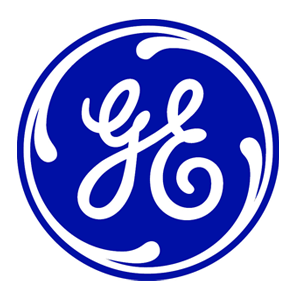Product Life Cycle—Reducing Waste and Greenhouse Gas Emissions
Product Life Cycle—Reducing Waste and Greenhouse Gas Emissions
GE Appliances is the first and only manufacturer to partner with the U.S. Environmental Protection Agency (EPA) on its Responsible Appliance Disposal (RAD) Program to reduce emissions and materials from appliances typically sent to landfills.
According to the EPA, roughly 9 million refrigerators and freezers are disposed of each year.[1] The sheer volume of this, coupled with the fact that consumers want their appliances recycled and are willing to go out of their way to purchase from a manufacturer that recycles, made it a smart decision for GE Appliances to step up to become the first appliance manufacturer in 2011 to partner with the EPA in its RAD Program. This program significantly reduces the landfill waste of appliance disposal and also helps cut greenhouse gas emissions.
According to a 2010 consumer survey conducted by the Stevenson Company on behalf of GE Appliances & Lighting, 70 percent of consumers want all or part of their appliances recycled, 82 percent will go out of their way to purchase from a manufacturer that recycles, and 67 percent are willing to pay more for an appliance if a retailer has recycling programs.[2]
A big part of GE Appliances’ recycling commitment is being carried out through a collaboration with Appliance Recycling Centers of America (ARCA) at its regional recycling center in Philadelphia operated by ARCA Advanced Processing (AAP). GE Appliance’s agreement with ARCA includes supplying used appliances to the Philadelphia center from a 12-state region on the East Coast of the United States.
In the first quarter of 2013, GE Appliances and ARCA reached a milestone of more than 1 million appliances processed through AAP, and estimates that this initiative already reduced landfill appliance waste by about 318,000 pounds a month, or 3.8 million pounds annually.[3]
GE Appliances’ collaboration with ARCA includes foam insulation recovery, transportation, and other end-of-product-life processing, which will not only appeal to its many customers, but also differentiates GE Appliances from the competition.
“Customers care about the environmental impact of the products they purchase, and at GE, we’re committed to reducing that impact,” said Mark Shirkness, General Manager, Distribution Services, GE Appliances. “By participating in this effort, we have made a voluntary commitment to both the EPA and our customers to report how we have improved performance on a variety of environmental metrics.”
Reducing emissions as well as landfill
The EPA’s RAD program is also aligned with GE’s Ecomagination commitment which seeks solutions for today’s energy and environmental challenges. RAD promotes recycling best practices for refrigeration appliances, including the recovery of insulating foam.
Of the estimated nine million refrigerators shredded annually, only a fraction has the insulating foam in their walls and doors recycled. During the shredding process, greenhouse gases and ozone depleting substances)can be released into the atmosphere, and insulating foam and plastics typically end up in a landfill. [4]
“The first UNTHA Recycling Technology (URT) system in North America for processing refrigerators and freezers recovers about 95 percent of the insulating foam and 95 percent of the blowing agents from the foam, significantly reducing greenhouse gas and ozone depleting substance emissions,” says Jack Cameron, ARCA President and CEO.[5][6][7] Including all the shredded materials, the URT system reduces landfill waste of a refrigerator or freezer by approximately 85 percent by weight, or from 55 pounds to less than eight pounds of waste per appliance.
A responsible supplier and long-term environmental benefitsAAP invested $10 million in the URT system as well as other capital equipment and has created more than 50 additional green jobs in its Philadelphia recycling center. In September 2012, the facility reached 100,000 refrigerators and freezers recycled and anticipates processing 150,000 used refrigerators and freezers each year. Of the landfill diverted materials, 89 percent will be reused in new products, and 11 percent will be used as fuel in cement manufacturing.[8]
“If the foam from the nine million refrigerators disposed of annually in the U.S. were processed through this innovative URT technology, the greenhouse gas emissions avoided would be equivalent to the annual CO2-e emissions of more than 2.3 million cars on U.S. roads,” says Christi Wantuck, program manager recycling, GE Appliances.[9][10]
GE continues a path to sustainabilityGE manages the life cycle of an appliance, from the manufacturing of refrigerators with more environmentally sustainable insulating material to responsible end-of-life disposal. GE offers nearly 500 ENERGY STAR®-qualified appliances which deliver efficiency and cost savings to consumers. In addition, a portion of the steel recovered from recycled appliances at AAP’s recycling center is reused as steel deck bottom plates in new GE locomotives.
GE Appliances is the only appliance manufacturer to partner collectively in four voluntary Environmental Protection Agency programs: ENERGY STAR®; Responsible Appliance Disposal (RAD); WasteWise, an initiative focused on waste reduction and saving environmental resources while reducing emissions; and SmartWay®, a program designed to help lower transportation-related emissions.
Read about product life cycle on the Citizenship website.
[1] Based on EPA Responsible Appliance Disposal Annual Reports. See epa.gov/rad
[2] Based on results from a 2010 survey conducted by the Stevenson Company on behalf of GE Appliances & Lighting. See: http://pressroom.geappliances.com/news/ge-expands-appliance-recycling-214918
[3] Based on ARCA Advanced Processing file dated 2012 re: Material not sent to landfill
[4] Based on results from a survey undertaken by AHAM as reported in UNEP 2005 and recently reported by ICF International in April 2010 report.
[5] http://www.arcainc.com/benefits_urt.html
[6] http://pressroom.geappliances.com/news/100-000th-refrigerator-recycled-238063
[7] http://www.gereports.com/ge-appliances-helps-unveil-fridge-recycling-behemoth-in-philly-expands-options-for-customers-and-supports-new-jobs/
[8] Based on ARCA Advanced Processing file dated 2012 re: Material not sent to landfill
[9] Equivalent CO2 (CO2e) is the concentration of CO2 that would cause the same level of radiative forcing as a given type and concentration of greenhouse gas. Examples of such greenhouse gases are methane, perfluorocarbons, and nitrous oxide. CO2e is expressed as parts per million by volume, ppmv.
[10] Based on ARCA Advanced Processing 2011 RAD data and calculations using U.S. Environmental Protection Agency global warming potential (GWP) equivalents: http://www.epa.gov/cleanenergy/energy-resources/calculator.html



